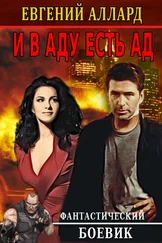I heard the rounds leave the muzzle, then heard the bullets ripping into the helicopter’s fuselage. Parker’s M-60 hammered back a reply.
At the same time, there was blinding pain in my head and for an instant my vision exploded into orange. I felt a slamming impact to my body, and then a strange numbness below my waist.
“God!” I gasped. I looked down at my body and couldn’t see my right leg. My first, horrible impression was that my leg had been shot off at the knee. But I didn’t see any blood.
Shock, pain, and confusion tore at me. I was trying desperately to control the helicopter and keep away from the ground fire that was still coming up at us from the enemy bunker.
I stole another look down in an effort to get my throbbing brain to acknowledge the fact that one of my legs had just been blown away. Is this the way this war is gonna end for me? I thought.
Suddenly it dawned on me that most of the pain that was surging through me seemed to be coming from the heel of my right foot. I cradled the collective under my left knee, grabbed the cyclic with my left hand, and used the other hand to investigate my leg. I patted my right thigh and knee, then rubbed my hand over my lower leg. I still had it! It had been there all the time, bent back under me and hanging outside the aircraft on the right door frame. At altitude, I often flew with my leg hanging there.
Lifting and tugging with one hand, I managed to drag the leg back into the cockpit. I couldn’t see anything wrong, except there was no heel on my boot. Then, blood began running out of the pant leg of my flight suit and, as the wind caught it, the blood splattered on me and all over the inside of the cockpit.
Realizing I had been shot someplace, I pushed the intercom to Parker and yelled, “Jimbo, I’m hit. My leg’s screwed up!”
“Can you fly, Lieutenant?”
“I think so. I’m going to head for Kien and try to put ‘er down, but I just don’t know how much control I’ve got over my leg.”
It was then that my nerve endings all realized at the same time that something had violated my body, and that they weren’t going to stand for it. The pain became almost unbearable.
A voice over the VHF radio distracted me momentarily from my agony. It was Mike Woods. “Hey, One Six, you’re wobbling a little. You OK down there?”
“We’re OK, Three Five,” I gasped, “but we’ve taken hits… I’m hit. I think I can make it to Kien. I think I can make it that far.”
As I finished talking to the Cobra, I heard some rustling noises in the back cabin. Looking over my left shoulder I saw that Parker had unstrapped from his seat, unplugged his helmet, and was beginning to crawl out the left rear door of the aircraft. We were about fifty feet off the trees and doing seventy knots, and there was Parker out of the aircraft, climbing up front to get in the cockpit with me.
Fighting the rushing slipstream and holding on tightly to the ship’s door frames, Jim planted a foot on top of the minigun, then swung himself into the left front seat beside me. I wasn’t hurting so badly that I didn’t realize what a gutsy thing he had just done.
Parker quickly buckled himself to the seat and plugged in his helmet. “Can I help you on the controls?”
“I can handle them OK,” I said, “but my leg is hurting pretty bad and I may need some help on the pedals.”
Jim put his hands gently down on the collective and cyclic, then positioned his feet on the pedals. He was essentially flying the airplane along with me.
Though crew chiefs were not pilots, they were familiar with the basics. They could fly the ship on a straight and level course, and could even land it in some emergency situations.
As Parker gradually took over the controls and flew on toward Kien, I used my free hands to pat over my body and try to find out exactly what had happened. With my feet now off the pedals, I felt around on my right leg and discovered that a bullet had gone completely through my calf. But that wasn’t the only place I was hurt. Blood was also beginning to puddle up in the pilot’s seat, and my backside was burning like fire.
Together, Parker and I pieced together what had happened. The enemy AK round had come up through the floor near the pedals. The bullet struck and carried away the heel of my right boot, went through the calf of my leg, and literally blew my leg to the side and out the cabin door. The round then apparently hit the fire extinguisher stowed to the right of my seat, and ricocheted up into my seat and through my thigh. Then it evidently kept going right on out of the aircraft.
We were so busy looking around the cockpit that we nearly overflew Kien. I got back on the controls to help Parker land the ship, and we set her down right at the front gate of the fire base.
I was so groggy by the time we touched down that I bypassed most of the engine shutdown procedures. I went right through the idle stop to full off on the throttle, switched off the battery, then tried to get out of the ship. But I couldn’t. All I could do was sit there in the seat that was, by that time, full of blood.
I didn’t remember him doing it, but Three Five had radioed ahead for a medevac Huey to pick me up at the fire base. It landed just shortly after Parker and I did and made immediate preparations to load me up and take me to the Second Surgical Hospital at Lai Khe.
Before that, however, I was helped over to the battalion surgeon’s tent, where they checked me over and put some bandages on my leg and backside. I just barely remember the corpsman from the medevac ship getting me aboard Dustoff before the morphine took over and the lights went out.
I phased in and out of consciousness during a brief stop at Second Surge in Lai Khe. I was awake enough to recognize the hospital building as the same place where I had watched Jim Ameigh die on the operating table. It was an ugly thought. I closed my eyes and turned my head away. Then I was back in Dustoff and headed to the field hospital in Long Binh, where I had been just a couple of weeks before to visit Bill Jones.
They kept me at Long Binh for three days. My wounds turned out to be minor—much messier than devastating. I guess I wasn’t exactly a model patient. By the third day in the hospital, I was fit to be tied. We were shorthanded in the platoon before I left. Now I knew that the scouts were having to double up on missions. With Willis running the outfit, the only thing I could think was, God help us all!
I used the landline telephone to call back to Phu Loi and ask if the troop supply ship could come down to Long Binh to get me. I was back in the platoon that same day, sporting a row of stitches in my thigh, as well as a cane to help me gimp around.
A few days later, the troop officers were invited across the runway to a party that battalion was throwing. There was a change of battalion commanders and the party had been scheduled to mark the event. The only problem was the dress—the invitation called for attendees to be in khaki uniform, and wearing all ribbons and regalia.
I hadn’t worn a set of khakis for at least ten months. Neither had most of the other guys. But, in the military, an invitation was really a polite demand that you be present, and in the uniform prescribed!
Most of us had forgotten even the basics, such as which breast pocket your name tag went over, and on which side of the collar went the rank versus the branch insignia. Or, even more perplexing, what ribbons we were entitled to wear, and in what order they were put on the uniform.
So, it was off to see troop 1st Sgt. Martin L. Laurent. The first question generally was, “Check my file, will you, Top, and see what ribbons I’m entitled to wear.” Then, “… and what order do they go in on the rack?”
Читать дальше












